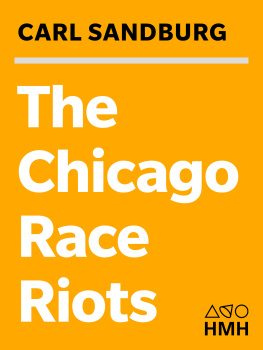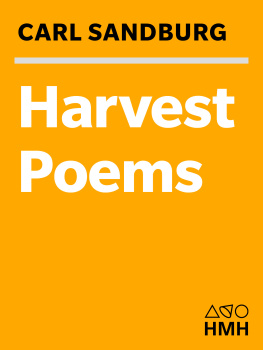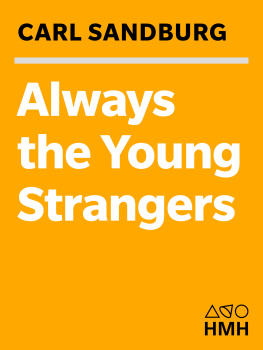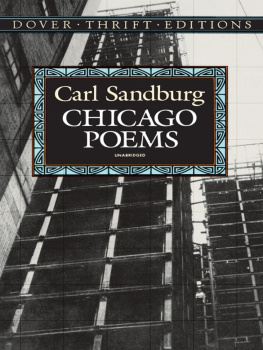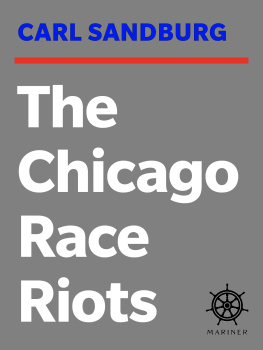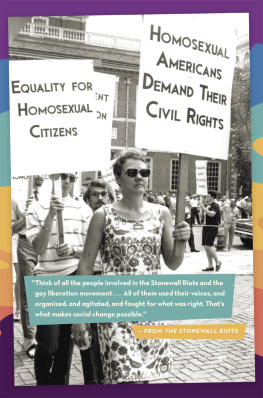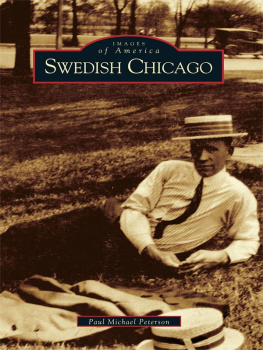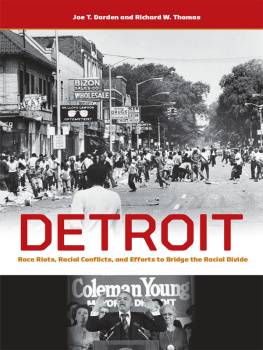Sandburg - Chicago Race Riots
Here you can read online Sandburg - Chicago Race Riots full text of the book (entire story) in english for free. Download pdf and epub, get meaning, cover and reviews about this ebook. publisher: Houghton Mifflin Harcourt, genre: Art. Description of the work, (preface) as well as reviews are available. Best literature library LitArk.com created for fans of good reading and offers a wide selection of genres:
Romance novel
Science fiction
Adventure
Detective
Science
History
Home and family
Prose
Art
Politics
Computer
Non-fiction
Religion
Business
Children
Humor
Choose a favorite category and find really read worthwhile books. Enjoy immersion in the world of imagination, feel the emotions of the characters or learn something new for yourself, make an fascinating discovery.
Chicago Race Riots: summary, description and annotation
We offer to read an annotation, description, summary or preface (depends on what the author of the book "Chicago Race Riots" wrote himself). If you haven't found the necessary information about the book — write in the comments, we will try to find it.
The Chicago Race Riots, July, 1919
With a preface by Ralph McGill and introductory note by Walter Lippmann
Chicago Race Riots — read online for free the complete book (whole text) full work
Below is the text of the book, divided by pages. System saving the place of the last page read, allows you to conveniently read the book "Chicago Race Riots" online for free, without having to search again every time where you left off. Put a bookmark, and you can go to the page where you finished reading at any time.
Font size:
Interval:
Bookmark:
Copyright 1919 by Harcourt, Brace and Howe, Inc.; Renewed 1947 by Carl Sandburg. Preface 1969 by Harcourt, Brace & World, inc.
All rights reserved. No part of this publication may be reproduced or transmitted in any form or by any means, electronic or mechanical, including photocopy, recording, or any information storage and retrieval system, without permission in writing from the publisher.
For information about permission to reproduce selections from this book, write to Permissions, Houghton Mifflin Harcourt Publishing Company, 215 Park Avenue South, New York, New York 10003.
www.hmhco.com
Library of Congress Cataloging-in-Publication Data is available.
ISBN 0-15-117150-5
e ISBN 978-0-544-41690-1
v1.0215
HOW much do cities, a people, a nation learn in fifty years?
Not much.
Half a century ago, on a hot and steaming July day, a Negro boy swam past an invisible line of segregation at one of Chicagos public beaches. He was stoned, knocked unconscious and drowned. Police shrugged off requests from Negroes that the rock-throwing white men be arrested. After the body was pulled from the water fighting was renewed. This and other forms of violence did not stop for three days. Thirty-four men had then been killed, twenty Negroes, fourteen whites. An uncounted number, more than a hundred, had been wounded. Several houses in the black belt had been burned and damaged.
A young reporter and writer, Carl Sandburg, was assigned to write a series of newspaper articles on the riots. They were published in book form in 1919 by a newly established publishing firm, Harcourt, Brace and Howe.
It is from these reports that we learn that a city, a nation, a people dont learn very much, if anything, about themselves in half a century.
There were commissions in 1919. They discovered there was much poverty. They found that the hearses haul more babies out of poverty areas than from those where the wages and hours are better.
There were other facts revealed by investigation.
Chicagos black-belt population of 50,000 had more than doubled, to at least 125,000, by 1919. (The black population was 812,637 in the 1960 census. An early estimate for 1969 was near one million.)
In 1919 no new tenements or housing had been built in Chicago to absorb the pressure of doubled population.
The black doughboys had come home from France and war cantonments. They had a new voiceor wanted to have one.
Thousands of Negroes had migrated from the South where neither a world war for democracy, nor the Croix de Guerre, nor three gold chevrons, nor any number of wound stripes, assures them of the right to vote or to have their votes counted or to participate responsibly in the elective determinations of the American republic.
Housing, war psychology, politics and organization of labor and jobs fueled the Chicago riot in 1919.
That and several other riots of half a century ago were a good school of experience. But we were all dropouts. Few Americans learned anything.
The decade of the 1920s was about to beginthe era of wonderful nonsense.
During that span of stock-market frenzy, few north of the Mason-Dixon Line were to pay any attention to the cotton Southwhere the boll weevil had arrived. He had made a long journey of many years from South America into Mexico, across the Rio Grande and the waters of the Mississippi, into the region where for so long a time cotton had been king. The boll weevil makes tiny noises. It lays an egg in a cotton boll. The hatched-out weevil chews awayjust enough to kill the boll. The clicking of the stock-market ticker tapes drowned out the weevil chorus.
By 1922 and 1923 cotton plantations and farms that had been producing thousands of bales of cotton were turning out 150 or 220 bales. By the late 1920s many of the two-storied houses were empty and deserted. So were thousands of cabins and shacks where the tenants and sharecroppers had lived. The hearthstones about which families had warmed themselves in grief and hope were cold. Doors swung drunkenly in the wind. Many a man owing the man and the county-seat store with its marked-up prices had vanished silently in the night. Numerous cabins were burned. Careless hunters, huddling inside in a sudden slash of November rain, would start fires that sometimes got out of hand. There were hundreds of lonely chimneys in the 1920s. (They were even lonelier in the 1930s.) Nearly 200,000 men, black and white, left the South in the 1920sthe boll-weevil decade. Most of them went to Dee-troit, to Akron, to Pittsburgh, to South Chicago... anywhere there were jobs that unskilled hands could do.
The very corrosiveness of the Depression years of fear, unemployment and grief brought a temporary halt to most of the migration from the South. Those years also delayed the development of resistance to racism that was plainly visible in the riots of 1919.
A. Mitchell Palmer, U.S. attorney general of that period, was far ahead of a later Joe McCarthy in creating a red hysteria. Woodrow Wilson sought to calm Palmer. He could not. The Palmer raids and charges yielded no results save that he was for a while a hero. The costly effect of A. Mitchell Palmers becoming a hero was that he gave free rein to all the ugliness and violence in America.
Anti-Semites had their inning. They printed and distributed The Protocols of the Elders of Zion, long before proved to be one of the more hoary fakes. The anti-Semites aroused the more simple minded with tales of a Jewish conspiracy. The anti-Catholics were also in full bloom. They blamed the war on the Catholics and the Negro. They printed smears and lies about Catholics and the plot for the Pope to come to America and take over. The Ku Klux Klan staged a revival out of Atlanta. America was so spiritually bankrupt that the nightshirt and mask business flourished nationally. The Klan stronghold was in Dixie. But it also established strong centers in Indiana, Oklahoma and Oregon. Never have all the peddlers of hate and lies had so great a harvest. The Negro suffered most.
Lynchings reached a crescendo in the South. Mob violence had been a part of Reconstruction. In exchange for Southern support to make Rutherford B. Hayes president in 1876, the Norths political and economic power structures had abandoned the Negro. He was literally turned back to states rights. Black codes, disfranchisement and segregation by law were quick developments. That horrorthe mob at a frenzy of bloody killingwas accompanied by laws and states rights decisions that declared the Negro inferior and defined his place. These mob activities also sent Negroes northward in search for jobs that were less and less to be found in the South, where fear and the boll weevil were at work.
But it was not merely the Negro who left. He was the more numerous in out-migration. But the poor white went, tooand all the Negros liabilities also were his. He had but one advantagehe had a white skin and he had been reared to believe this gave him supremacy and status.
So, when Negro migrants came asking for jobs at factories and mills, the white job holders, especially the immigrants from Dixie, reacted with fury. In east St. Louis in 1917, forty-seven persons, mostly Negroes, were killed and hundreds more wounded in vicious race riots growing out of resentment against Negro employment.
In July of 1919, in Washington, the nations capital, several thousand troops were called out to halt the white-black rioting. That same summer there were riots in New York and Omahaall in addition to those in Chicago. In the South that summer there were seven riots. Most of them grew out of the impudence of returned Negro veterans demanding their rights as citizens.
Reporter Carl Sandburgs accounts were not easy to get. They are not always, as he himself said, in exact sequence. But it was a fine, down-to-earth job.
Next pageFont size:
Interval:
Bookmark:
Similar books «Chicago Race Riots»
Look at similar books to Chicago Race Riots. We have selected literature similar in name and meaning in the hope of providing readers with more options to find new, interesting, not yet read works.
Discussion, reviews of the book Chicago Race Riots and just readers' own opinions. Leave your comments, write what you think about the work, its meaning or the main characters. Specify what exactly you liked and what you didn't like, and why you think so.

